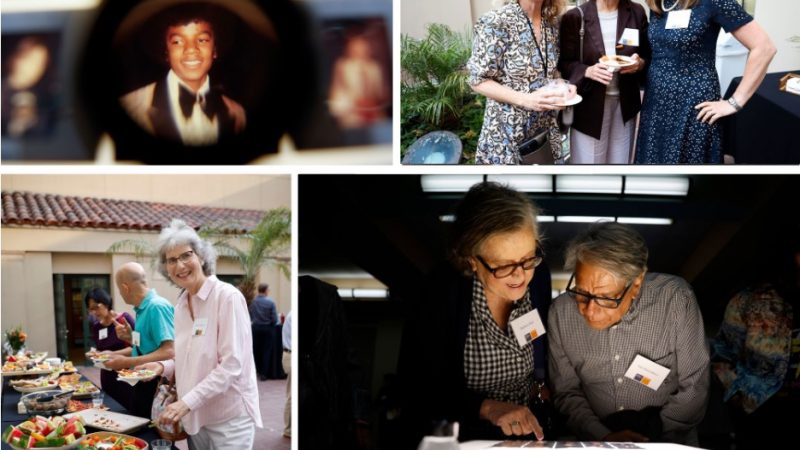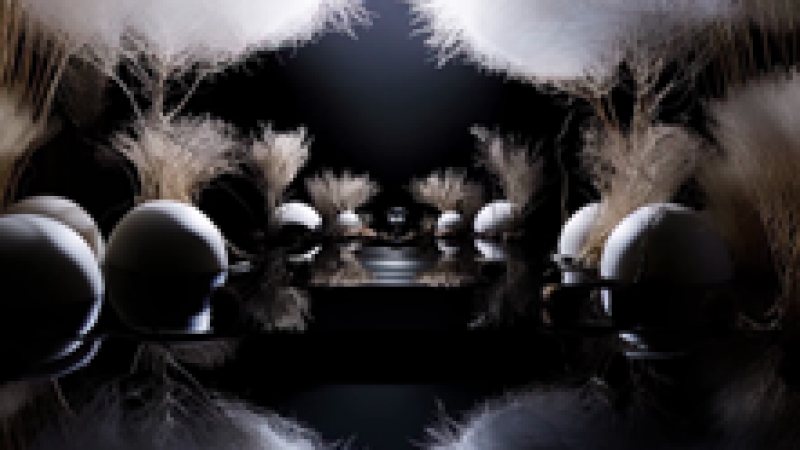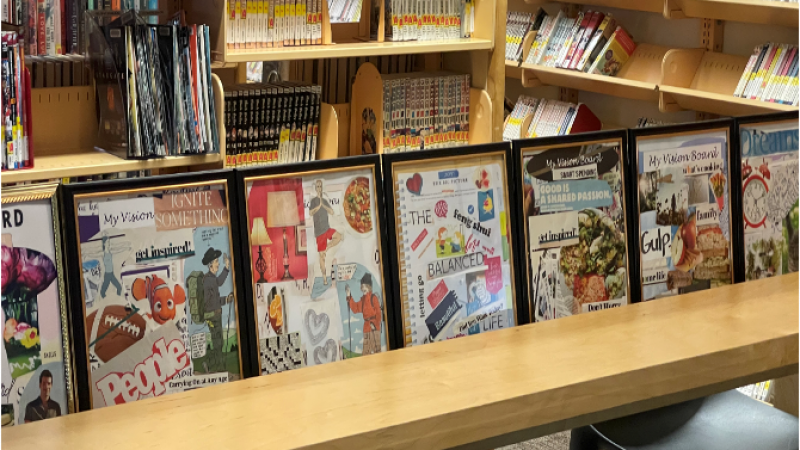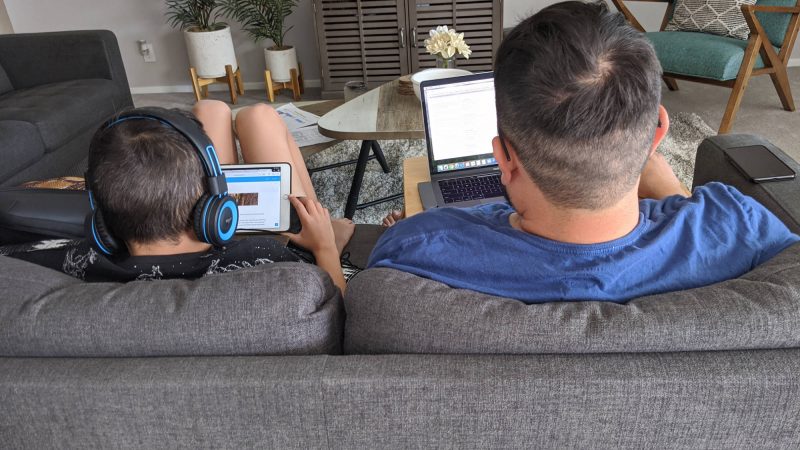On Monday evening the “king of kitsch” and the “pope of trash” held court at downtown’s Orpheum Theatre. Co-presented by the Library Foundation and The Broad museum as part of the “The Un-Private Collection” series, artist Jeff Koons and filmmaker/author/photographer John Waters took the stage from opposite curtains like two opposing presidential candidates ready to debate—both in formal dark suits and politely shaking hands. The pair swiftly sat down and warmed up for the packed house of nearly 2,000 attendees to discuss Koons’ iconic body of work.

Holding tight to his clipboard of questions, Waters drilled Koons on his early days fishing for some sign of unhinged behavior of the artist as a young man. Undeterred by Waters’ playful prodding, Koons remained calm and upbeat as he spoke about his traditional upbringing in Baltimore—the one scathing story he remembered involved a “sexy” ceramic ashtray that he gravitated towards every time he visited his grandparents. Meanwhile, Waters, more easily inhabiting his outsider-artist status from an early age, confessed that as a child he constantly pretended to be the “nude descending the staircase.”

Waters also grew up in Baltimore and the two flashbacked to local haunts like a gaudy furniture store that either directly (Waters) or indirectly (Koons) inspired their art. They told a touching story about how Koons’ aunt and Waters’ mother, who both recently passed away, had lived in the same retirement home and used to exchange anecdotes about their provocateur nephew and son. Koons credited his aunt for taking him to art classes on the weekends, which helped to foster his early knack for drawing and gave him a sense of self. But he seemed to learn more about expressing feelings from music than art, “I started to become ambitious when I heard Led Zeppelin,” recalled Koons of driving around, cranking up Zeppelin and wanting to take his life in a different direction.
He enrolled in art school and on his first visit to the Baltimore Museum of Art he was humbled by all the great artists he had never heard of. Surviving this moment of realizing he didn’t know anything pushed him to become a disciplined student, and eventually a great artist. He explained how his paintings soon became bigger than the walls, so he naturally moved on to other mediums, producing the body of work that fans are familiar with today.
 Waters curated slides of some of his favorite Koon pieces, including The Rabbit and Balloon Dog (Blue). When Waters asked how Koons felt about viewers who became confused or angry over his work, Koons seemed nonplussed. “The art happens inside the viewer,” said Koons. From his famous titillating rendering of Michael Jackson and his monkey Bubbles to a recent Lady Gaga album cover, Koons has been influenced by popular culture as much as he has been influenced by Plato and Kierkegaard. He emphasized how ultimately his art is about acceptance—accepting ideas and the self—and that is why he often incorporates familiar images and objects like garden gazing balls into his work. This accessibility has afforded him a huge following and success, which Waters astutely defined his own barometer of success by two things: “You can buy any book you want without looking at the price tag, and you don’t have to be around assholes.”
Waters curated slides of some of his favorite Koon pieces, including The Rabbit and Balloon Dog (Blue). When Waters asked how Koons felt about viewers who became confused or angry over his work, Koons seemed nonplussed. “The art happens inside the viewer,” said Koons. From his famous titillating rendering of Michael Jackson and his monkey Bubbles to a recent Lady Gaga album cover, Koons has been influenced by popular culture as much as he has been influenced by Plato and Kierkegaard. He emphasized how ultimately his art is about acceptance—accepting ideas and the self—and that is why he often incorporates familiar images and objects like garden gazing balls into his work. This accessibility has afforded him a huge following and success, which Waters astutely defined his own barometer of success by two things: “You can buy any book you want without looking at the price tag, and you don’t have to be around assholes.”
If you missed this memorable evening full of witticisms and insights on art, life, and the occasional divergence into sex, drugs, and rock-and-roll, then you can watch the video below.
–Posted by Bridgette Bates and photos by Gary Leonard








